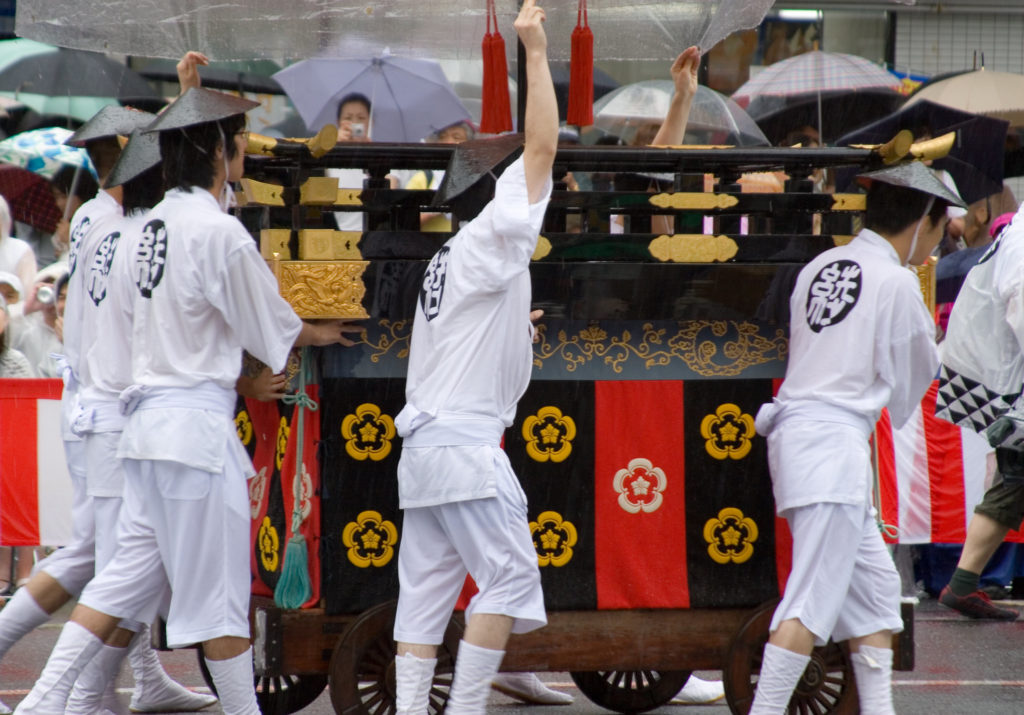
Gion Matsuri: the Highly Anticipated July Festival
Of all the festivals in Japan, Gion Matsuri is arguably the most popular. The festival is held at Yakasa-Jinja Shrine in Kyoto for most of the month of July. Festivities called “Yoiyama” are held in the evenings July 14–16, right before the main event on the 17th, when a spectacular procession of floats wind through the streets amid countless revelers.
Throughout the month long celebration, around 30 events occur, including the Kencha Matsuri (tea ceremony festival) and the Hagasa Junko (flower umbrella procession), when umbrella floats and dancers parade in the streets. During the main festivities of Gion Matsuri, the streets are closed in the evenings and clusters of stalls appear to sell food, drinks, and various memorabilia.
Yamaboko Junko
The highlight of the festival is the Yamaboko Junko on the 17th, when onlookers are treated to a breathtaking parade of floats. The parade begins at 9 am and follows a 3-km path through the streets of Shijo, Kawamichi, and Oike.
There are 32 floats collectively called Yamaboko or Yamahoko. There are actually two types of floats in the parade: 23 are called Yama and 9 are called Hoko. The immense Hoko floats can reach up to 25 meters in height and weigh up to 12 tons. They are so heavy that it takes up to 50 strong men to pull them. Each float has a second floor that may have musicians playing various musical instruments. At the head of the entire parade is the Naginata Hoko, where the “chigo” or sacred page boy is carried.
Yama floats are smaller and are adorned with intricate designs depicting scenes from Chinese and Japanese history and mythology.
History
The festival goes far back in Japanese history, during the Heian period (794–1185) when Kyoto was enduring many epidemics and natural disasters. Gion Matsuri was a religious ceremony intended to appease the deities and spare the people from more calamities.
The festival developed further by the end of the Kamakura period (1185–1333) when various guilds and merchant families designed the floats to flaunt their wealth, skills, and talents. The floats and festivities became more elaborate throughout the centuries until they became the renowned Gion Matsuri of today.

